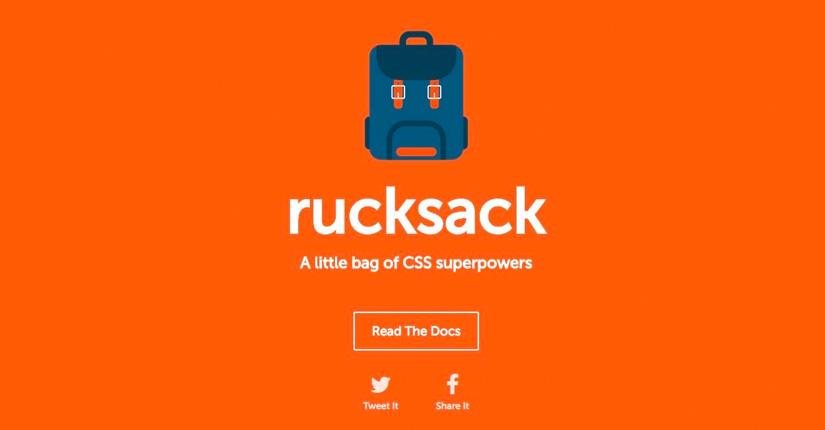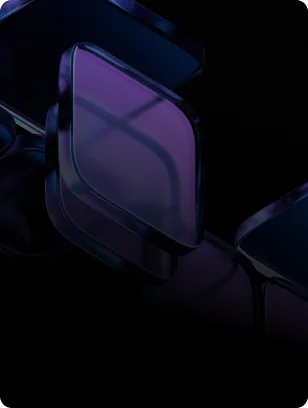
Site Search
Rucksack – The New CSS Development Tool

Table of contents

Let's talk
Reach out, we'd love to hear from you!
CSS development tool one of the recent humdrum and not just fun, as it used to be. If that has been what you have found in the last little while, then it is a good idea to turn something new and fresh such as Rucksack. A neat and compact package full of goodies makes CSS development easy.
It is both modular and quick as lightning. Rucksack built of PostCSS and come out with many full-fledged features. Designers and developers want to start using tools right out of the box, and in this case, we see that Rucksack will not disappoint us. It is easy to integrate it into their work without any hassle. Developers are going to find plugins that exist for the majority of build tools.
You can integrate this Rucksack CSS development tool manually with npm module or process the CSS right into the command line.
Here are some of the features that developers might find interesting. Go through the features pointed by the team of developers at our Web Design Services.
Options
It is a complete modular tool and lets you turn their features on and off. You can also customize it to your taste. Simply pass on the feature name and a Boolean as soon as you initialize it in your build tool. All features can be set to true by default.
Responsive Typography
You can produce the “automagical” fluid typography thanks to a new, responsive property on the font size. You can get a start is as easy to specify responsive as font size.
If you want to exercise some control over the font size and you can change the default settings. The most efficient way is to achieve through new shorthand syntax in the font size as well as a new property called font range. The font range is able to identify the viewport width between the font size is fluid. Well, out of this range, the font size can be set against the minimum and maximum values.
Well, it is possible to assign specific values like px, rem, and em with independent properties. Rucksack responsive typography output complicated calc- and VW-based font sizes. Along with the media queries, you can establish a range between font sizes that is fluid.
Shorthand Positioning
With the use of Rucksack, you will get along with shorthand methods to utilize it by properties such as padding and margin to position your offsets.
Quantity Pseudo-Selectors
In this CSS development tool that will add pseudo-selectors to allow you to pick and style elements as per their quantity. You can utilize them to create powerful, responsive and content-driven designs –
1. :at-least applies if there’s a specific number of items or more
2. :at-most applies if there are a specific number of items or less
3. :between applies to all items inside a specific range
4. :exactly applies if there’s an exact number of items
These quantity pseudo-selectors helps to style elements based on the sibling count.
Property Aliases
The rucksack will allow you to set aliases for long property names and save excessive keystrokes. You just need to add it to the @alias rule in the format (alias): (property);. Well, you can utilize the aliases anywhere including other properties. It is better to have a single @alias rule in a project and specify all aliases in a place.
Input Pseudo-Elements
Rucksacks’ pseudo-elements let you style efficiently the inner elements of HTML5 inputs across browsers. The range input (and the:: placeholder when you enable automatic vendor prefixing) is the only element to support. Yet you can add the extra when browser vendor allows access to their UPIs.
You can style the placeholders with the use of the:: placeholder pseudo-element. You can apply this to any input element or at the style sheet’s roof for global styling.
You will find the range input difficult to style, so you can enable the use of:: track and:: thumb. You can apply these to any range of elements or at the style sheet’s root for global styling. You will come across the following declarations—WebKit appearance: none; and Moz-appearance: none. You can add relevant elements allowing the custom styles to apply correctly.
Native Clearfix
Rucksack enables the common clear fix methods into native methods within the clear property. It defines itself as the method by which developers make a parent element self-clear so that floats remain.
Here you will find new two new methods to add – fix and fix legacy. You will get the same result, yet possess different degrees of browser support. You need to fix the output of the cleaner code that you will require for IE8.
Font src Expansion
Rucksack offers a shortcut method to produce some of the bulletproof src set in @font-face. It includes a new font path and you need to set the path simply to the font files. This will create an src-set output based on the FontSpring syntax.
Hex RGBA Shortcuts
This CSS development tool offers a simple shortcut to add an alpha channel to a hex color. You need to add the hex value to convert it as a substitute to the RGB value.
Easings
You will find a slew of modern easing functions present on Rucksack. Designers and developers can use them both in CSS transitions and animations. Any number of new easing will allow us to translate to cubic-bezier () functions on output. You can natively comprehend it.
Legacy Fallbacks
Legacy support on Rucksack because of their easy provision of fallback comes with many properties on an older browser. You can use voluntary add-on that you can toggle on and off fallbacks. Opacity is also able to generate a suitable MS filter to accomplish transparency in IE8. RGBA is able to produce a hexadecimal fallback rgba () for
Automatic Prefixing
The developers can easily run the code through the suitable Autoprefixer, which automatically applies to a relevant vendor or you can run them as per current browser popularity and support.
In order to know more about how our developers are using it effectively, you need to look at our recent works.
OR
You can drop in your queries for developing a new website at [email protected].


